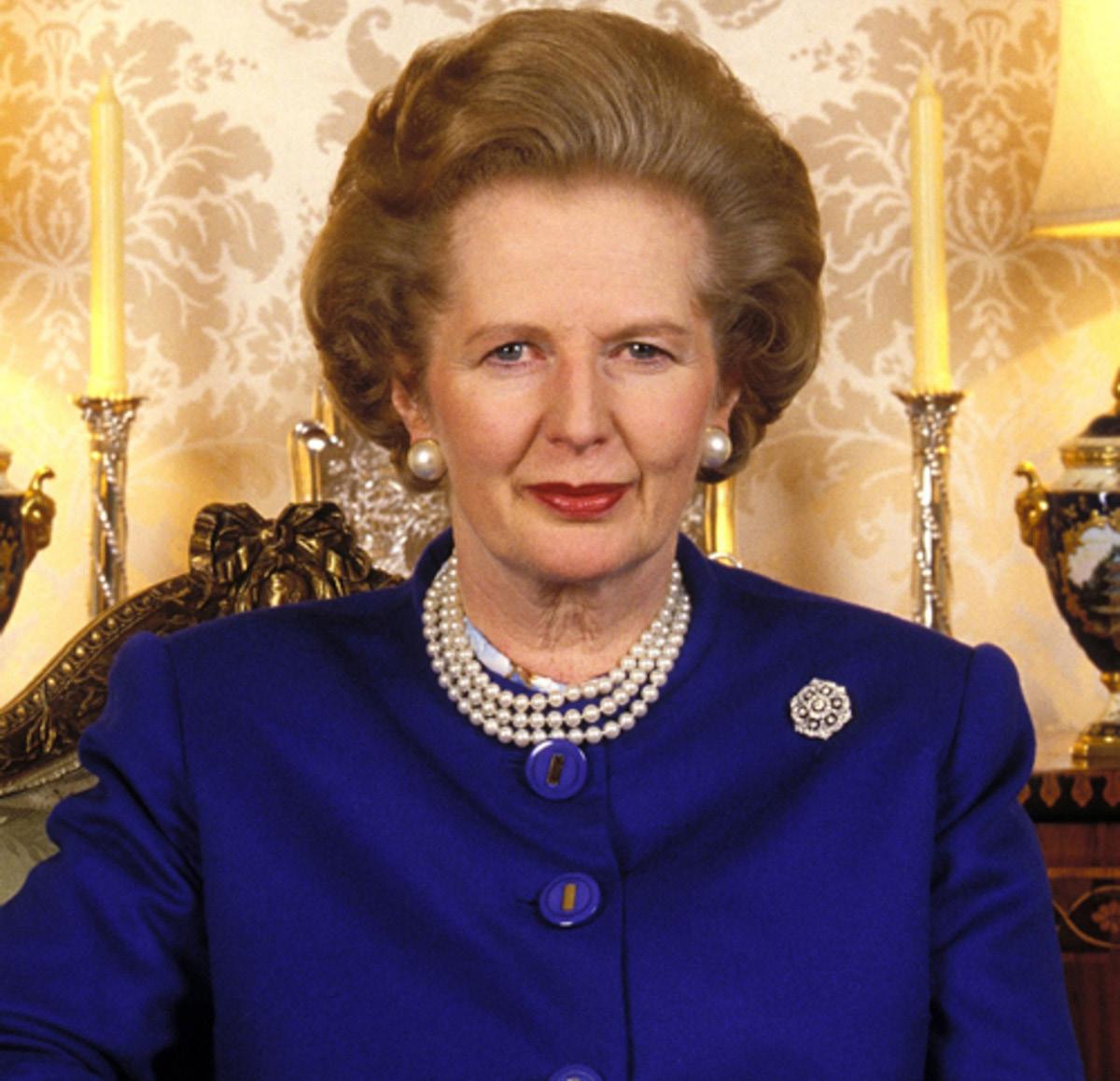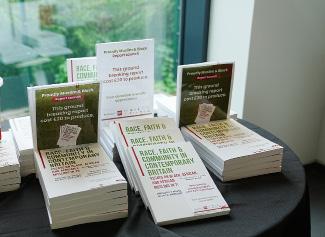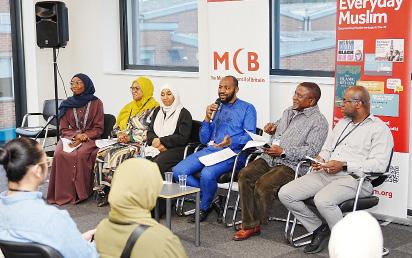
13 minute read
Proudly Muslim and Black Report 2022
Priced out of Being Alive : Young Renters in Britain
Credits: Biography
Advertisement
Ianto Gri n, BA in Music and Anthropology
I’m sitting, holding my keys in my hand, they are a comfort that I haven’t felt in weeks. A blue fob, a traditional-looking bronze, a silver ridged one. e satisfying clink, the added weight to my keychain, which has been so disturbingly light: I could almost cry at how a ected I am by these three small objects. e relief that they’re here, in my hand, that they open the door to my at, where I live. It’s such an unbearably simple thing to be relieved about.
at relief also has considerable limits. It’s hard to put a price on security, but I’m going to anyway.
£39,000.
According to Shelter’s criteria for ‘a ordability’ – which is that yearly rent should be no more than 35% of household income – our situation is una ordable. Our rent is around 62% of what we ‘earn’ as students, of what our governments give us to survive. Added to this, energy bills for the next year are set to average at £3,549, decreasing our le over earnings to 32%. at leaves roughly twenty grand, for four people, for twelve months, less than half of what Wise.com calculates as our average living expenses. Price caps on bills favour families and businesses – the classic subjects of Tory sympathy – and there are no caps on rent. (!!!!?????)
is ‘crisis’ is robbing us, young people, of life. All throughout this summer, a friend of mine spent the rst three waking hours of every day on Spare Room. She wouldn’t eat, drink or go to the bathroom until she’d answered every new ad. She wasn’t alone. e frenzy for housing has become all-consuming; it’s another brick in the wall of pathological anxiety being built around the under35s, an anxiety which makes ‘normality’ unliveable.
It’s disabusing us of the crazy notion that we have a right to our youth, and this is seriously fucking dangerous. Youth is about questioning, criticising, shouting down authority – even if you’re wrong. It’s about being pig-headed and indignant, and refusing to just accept what you’re told. It’s about having fun and being frivolous. I realise this is basically a punk analysis of what youth should be, and many will disagree with it on moral, cultural, religious, and other grounds, but bear with me.
Punk came to popularity under Margaret atcher for a reason, and that reason was the economic oppression of the working class. A quick round-up of her greatest hits:
Rapid de-industrialisation of the British economy, starting in 1979.
Introducing ‘Right-to-buy’ in 1980, radically undermining the provision of a ordable social housing in the UK.
Poll or Council Tax, unveiled in 1990. is changed the way tax on housing was calculated from the market value of the property to the number of people living there.
And, a little bonus, halting the provision of free milk to primary school children in 1971 when she was Education Secretary.
Is it so surprising that a disa ected youth turned to a subculture which championed their right to be pissed o ? Well, the latest Tory administrations, driven by fanatic, draconian Conservativism under Johnson and now Truss, are facilitating the growth of a new disa ected youth. In the UK in 2021, the Private Rented Sector was estimated to be worth £1.338 trillion (propertymark.co.uk) thanks to the Buy-to-Let mortgage, introduced in 1996 under New Labour. In the UK in 2022, I and several close friends have faced homelessness, been homeless. is was in large part thanks to the precedent set by policy like the standardisation of the Assured Shorthold Tenancy – which gives landlords the power to evict without a reason – in 1997. atcherism isn’t rearing its disgusting head (although Johnson and Truss have given it a lovely makeover), it never le .
What do we do then? It’s easy to feel helpless when you nd yourself o ering more than you can a ord in rent, to a landlord you’ve never even spoken to, mediated by an estate agent who openly admits that they’d rather be somewhere else (yes, that has happened to me). But a disa ected youth also has great potential to be a militant one. We need to be punk about it; we need to stand up against capitalism, conformity, and blind consumerism. Our citizenship is worth more than our ‘contribution’ to society, and we need to make the institutions above us pay. We need to shout, we need to swear, we need to steal, we need to piss o the politicians, we need to squat every fucking building from Croydon to Barnet, Uxbridge to Upminster.
More than this though, we need to get organised. Our power may be in our passion, but without direction it’s just going to be misspent. We need a movement that is both huge and local, that spans and connects communities. So join communities, make them. Get involved in one of the organisations at SOAS – Justice 4 Workers, SOAS Solidarity, London Strike Solidarity (for details on any of these, hit me up via my student email). Find out what’s happening around where you live – how are people already resisting? Build networks with your mates, go to protests together, read radical literature together. Try to diversify your networks – only by working intersectionally can we create change that is more than just reformist. Be in communion with the older generations, many of them face far greater insecurity than we do – they may be in need of help, they may have untold wisdom to help guide our struggle.
Most of all, don’t lose hope in y/our own situation. Hopelessness is defeat, and community is hope.
NEOM: The Future of Saudi Arabia?

PHOTO CREDIT: An artist rendering of the mirrored parallel buildings.
Angus Robins, MSC Politics of the Middle East
Saudi Arabia has recently released concept art for their new mega-project NEOM: e Line. At rst glance, it appears to be an architectural masterpiece. From a topographical glance, it looks like a 170km pencil, stretching across the Saudi Desert. However, this vanity project may bring ruin to the country.
‘’ is is a much-needed investment into Saudi’s bleak economic forecast; poor innovation and, graduate employment rates have resulted in a drastically underdeveloped private sector.’’
NEOM (as a whole) is a $1 trillion giga-project designed to reinvigorate the Saudi private economy and pave the way for a post-oil future. e project has wide-ranging goals, from the establishment of a sea-born industrial zone, ski resorts, ports along the dead sea and, even 16,000 acres of genetically altered agriculture in the heart of the Saudi desert. e newest addition ( e Line) is an accompanying $500bn consolidated city built with disruptive technologies. New concept art paints an interesting picture; a long, narrow city footprint (see above) that stretches from Egypt to Jordan (nearly 170km) across the desert of Saudi. e cherry on top of this major investment is e Line, acting as a honey trap to investors, tourists and businesses alike. By demonstrating the liberalisation of previously strict laws regulating everything from the private to the public, hopes are to establish long-term business interests in the country, outlasting global oil demand.
is is a much-needed investment into Saudi’s bleak economic forecast; poor innovation and graduate employment rates have resulted in a drastically underdeveloped private sector. With oil revenue accounting for 87% of Saudi state revenue, global attempts to transition to a post-oil future represent a signi cant threat to the nation’s future. is Project is part of ‘Vision 2050’ and aims to transition the country into a world-leading technological and manufacturing centre. is project has massive promise, with goals to create a regional trade hub, alongside world-class productivity, arti cial intelligence and fully automated robotic labs.
To this point, the entirety of NEOM will be beyond Saudi jurisdiction in attempts to draw foreign talent to create a world-leading tertiary hub. is attempt to secure Saudi regional and global relevance is the brainchild of Mohammad
bin Salman (MBS), the new Crown Prince of the Country, who represents massive reform within the Kingdom. From curtailing of religious police to the partial li ing of draconian Women’s rights laws, the young Crown Prince represents the most signi cant state-led reform of the country in living memory. Indeed, both reforms and the mega project can be seen collectively as an enticement to foreign businesses and workers to move to Saudi Arabia.
However, MBS’s program is fraught with complications, even before construction. ree men have recently been put to death following their refusal to leave their homes to make way for the project, accentuating the Kingdom’s already tenuous human rights record. e assassination of journalist and, dissenter, Jamal Khashoggi, is still fresh in everyone’s mind. As such, NEOM: e Line’s plan to make use of disruptive technology also represents a distinct threat; the use of espionage and, surveillance will be easier than ever in this hightech city. Delivery of the project will also present signi cant complications; other mega projects within the kingdom have failed spectacularly, and, the Crown Prince’s unrealistic expectations (such as robot servants, ying cars and, reportedly even a fake moon) will also represent hindrance. ere is no turning back from this either, the Crown Prince’s recent consolidation of power has resulted in total control of the project and, the partial sale of ARAMCO, Saudi’s state-owned oil producer alongside emptying of their co ers to fund the project will cripple the country in the event of the project’s failure.
e Project and the Kingdom’s future are now linked; both the reward and failure of the project will a ect Saudi citizens for generations to come. e promises made of the project are vast, but delivery will almost certainly be wrought with delays, setbacks and, even broken promises.
Its major aim, to draw transnational corporations into the company (along with their workforce) will all hinge on the success of this project. However, if successful the move will drastically alter the composition of the global technological elite from traditional research-heavy countries and will shi global focus in the direction of the Middle East.

FEATURES EDITOR: Naaz Hussein
31 OCTOBER 2022 Features
Proudly Muslim and Black Report 2022
Sanna Hamid, BA History and International Relations
Recently, the Muslim Council of Britain and Everyday Muslim Archive launched a report detailing the experiences of African and Caribbean Muslims in the UK. For over three years, alongside several other partner organisations, including SOAS, they have brought together academics, industry professionals and everyday people to explore this intersection of identities. For too long, Black Muslims, who make up 10% of British Muslims, have had their achievements and challenges side-lined, not really making it to mainstream media. e underlying issue being that Black Muslims face a combination of racism and Islamophobia, within Muslim communities and wider society. e aim of this report is to highlight the experiences of Black Muslims and bridge the gap between the communities.
When I was at the launch event for the report, at a trendy apartment block in Battersea, I was greeted warmly by one of the aunties featured in the report as soon as I entered the room. An impressive number of people have been involved in the creation of the report, including Lord Simon Wooley, who travelled for two hours from Cambridge to London to talk for 10 minutes! In his brief re ection with the audience, he mentioned the thing that stood out to him was the optimism of the contributors.
As the evening went on, the oor opened up for questions, and people from the audience started sharing personal stories. As they connected over shared experiences, the celebratory tone started shi ing to one of expressing dissatisfaction with the status quo. A comment was made by a panellist that there were “not enough Asians in the audience” for his liking. ere were a few, but you could count them on one hand. I felt slightly uncomfortable for a second, but I quickly brushed the feeling because I knew he was right. Largely, the target audience for the report is British Muslims, of which the majority are South Asian. I wanted to ask, ‘But what are the solutions?!’ Yet for some reason, I couldn’t bring myself to. So, I went home and read the hard copy gi ed to me. A few things stood out to me. Firstly, the impact of hostile immigration policy on Black Muslims. ere were anonymous cases of people arriving on temporary visas, getting married and having children in the UK, to then be deported. ere are growing concerns that the 2014 Immigration Act will enable what happened with the Windrush generation to happen again. With British citizenship itself being something to ght for, discrimination in other areas is not surprising.
Colourism in Arab and Asian communities has meant that it is not uncommon for Black Muslims to face racism in Islamic educational institutions. is means Black children face racism at every angle of the educational development, from within religious madrassas as well as British schools. In North London, the Nana Asmou supplementary school is an example of what is being done to combat this structural miseducation. Soukenya Osei-Bonsu, the founder of the
Black Muslim Forum, believes that education is ‘the prevention and cure’. She is passionate about restoring the historical dignity of Black children, whose histories are so o en reduced to conquest and enslavement. For religious institutions, proactively engaging with members of the Afro-Caribbean community for leadership opportunities, curriculum development and general vacancies is cited as a key takeaway.
Pregnancy mortality rates in the UK are ve times higher amongst Black women than white women. ese shocking stats were unpicked by six Black British Muslim women reporting on how the intersectionality of their faith and race created a unique discrimination. Insensitivity to privacy, dismissal of symptoms and delaying of treatment are common within all their stories. Interestingly it is not just a UK problem. Across the pond in Toronto, a young Somali healthcare professional shared similar stories of racism in the workplace on the ‘Digital Sisterhood’ podcast. Instances of being assumed to be a cleaner or not being trusted to carry out tasks she was quali ed to do were commonplace.
For a while now, the media industry has struggled with diversity in the newsroom. Amandla omspson Johnson shared his experiences being one of the only Black journalists working for the Islam channel. Even though the channel’s largest audience was in Nigeria, there were few stories about Africa. He took the opportunity to pitch original content and from then on he has been writing without placing Europe at the centre. Visibility in the media for Black Muslims is one of the recommendations made at the end of the report.
e report has been described as ‘just the beginning’ of e orts to dismantle anti-blackness, create e ective policy change and develop a more equitable Muslim community. Many contributors quoted the verse from the Quran, ‘O mankind! We created you from a single pair of male and female, and made you into nations and tribes that you may know each other. e most honoured of you in the sight of God is he who is most righteous amongst you. And God has full knowledge and is well acquainted with all things.’ 49:47. Just in time for Black History month in the UK, you can have a look at the full report too by searching for the ‘Proudly Muslim and Black’ report from the Muslim Council of Britain’s website.


Launch event for PMB report (Credits: Muslim Council of Britain)






